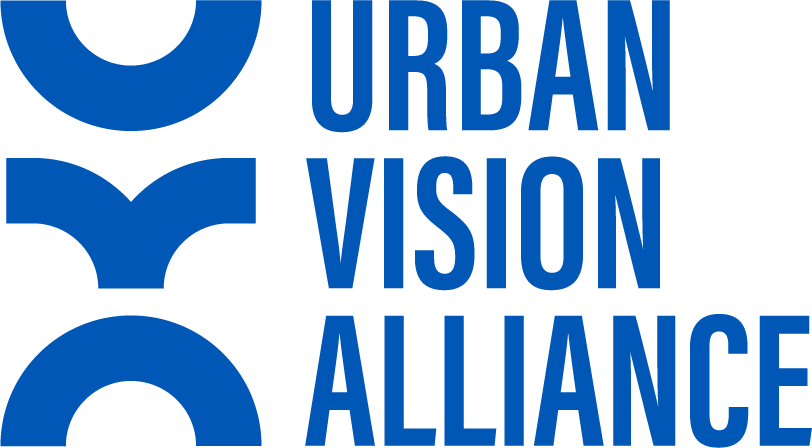Much of our information about homelessness comes from the 2020 Annual Homeless Assessment Report produced by The U.S. Department of Housing and Urban Development (HUD) Office of Community Planning and Development, which outlines the key findings of the Point-in-Time (PIT) count and Housing Inventory Count (HIC) conducted in January 2020. However, there are other sources that paint a broader picture.
Counting People Experiencing Homelessness
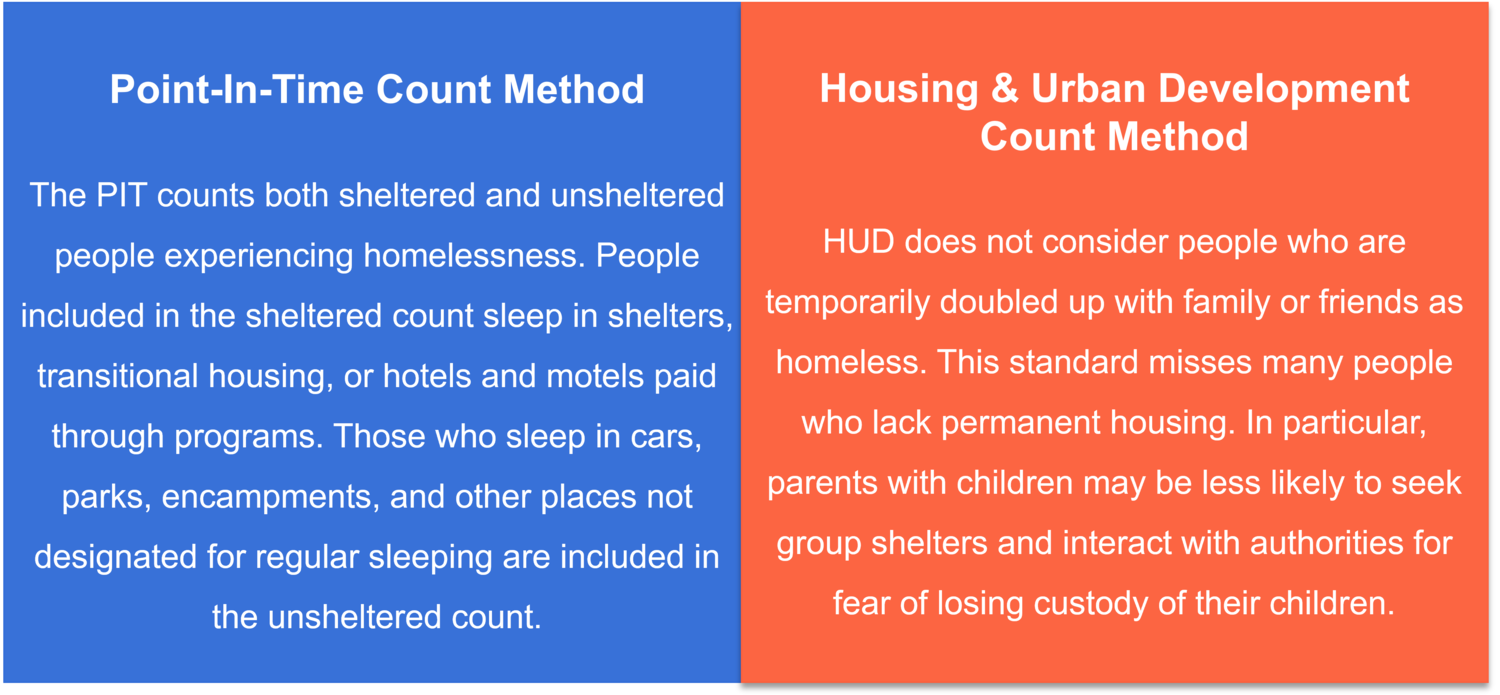
National Center for Education Statistics

Another source of data on the number of people experiencing homelessness is the National Center for Education Statistics (NCES). For 2019, NCES reported that 1.5 million people experienced homelessness across the U.S. as compared to the 2019 national PIT count of just over 567,000. Housed within the U.S. Department of Education, NCES compiles data on public school students experiencing homelessness during the school year. The count uses local school enrollment data that are submitted to the states and then reported to the Department of Education.
Unlike the one-night PIT count, the NCES count covers the entire school year and more accurately captures the fluid nature of homelessness. NCES defines students experiencing homelessness more broadly than the PIT count to include youth who are doubled up in housing and other temporary circumstances. However, this count includes only public school students and does not track adults experiencing homelessness. This count also does not include children who have dropped out of school, children in private schools, young children who are not yet enrolled in school, and children who experience homelessness outside of the school year.
Sources: NCES & Population Reference Bureau
COVID-19 Pandemic Impact
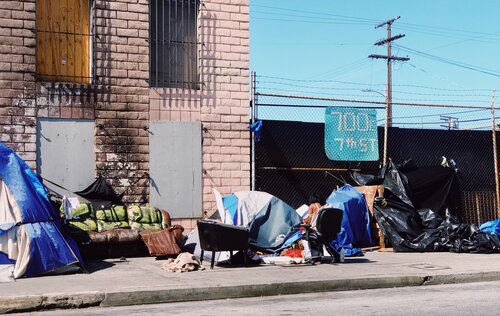
The COVID-19 pandemic in the United States has led to mass job loss and unemployment with fears of mass evictions as tenants became unable to pay rent. According to US government sources, homelessness has increased drastically, particularly in the West where real estate shortages drive up rents even higher and where people from already lower income levels were laid off from their jobs and evicted from existing housing. The estimates for people experiencing homelessness in the US during the COVID-19 pandemic range from roughly 600,000 to 1.5 million people, making the US the worst affected industrialized country with regard to unhoused individuals.
Sources: Population Reference Bureau & NPR
Homelessness in the United States
According to the federal government’s 2020 national point-in-time estimate, there are nearly 600,000 people sleeping in shelters or on the streets in the U.S. every night — up 2.2 percent from 2019.
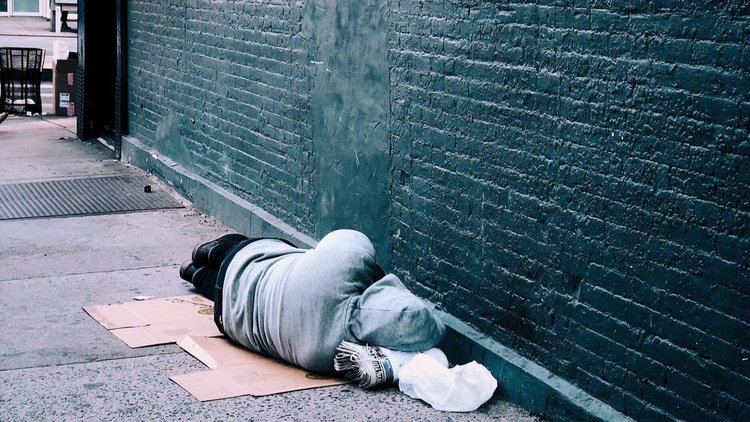
UNITED STATES
For the fourth consecutive year through 2020, homelessness increased nationwide.
For the first time since the nationwide survey of homelessness began in February 2007, the number of single adults living on the street in 2020 (209,000 people) was greater than the number of people counted in shelters (roughly 199,500). Additionally, the rates of homelessness among veterans and families — two groups targeted by recent federal housing efforts — actually increased. Nearly 6 of every 10 people experiencing unsheltered homelessness are in urban areas.
The true number of Americans experiencing homelessness is much greater than official statistics reflect because these numbers don’t include those who are couch surfing, living in hotels, or who are so well hidden that the government trackers can’t find them.
Sources: HUD 2020 Annual Homeless Assessment Report, The U.S. Department of Housing and Urban Development 2020 PIT Estimates, Population Reference Bureau
National Point-in-Time Count 2016 – 2020

In Thousands | 2016: 54.9, 37.3, 17.6 | 2017: 55, 36, 19 | 2018: 55.2, 35.8, 19.4 | 2019: 56.7, 35.6, 21.1 | 2020: 58, 35.4, 22.6
In 2020, six in ten surveyed (61%) were staying in sheltered locations — emergency shelters or transitional housing programs — and nearly four in ten (39%) were in unsheltered locations such as on the street, in abandoned buildings, or in other places not suitable for human habitation.
Not surprisingly, people experiencing homelessness die, on average, 17 years earlier than those who are housed. And those suffering from long-term homelessness are more likely to experience the criminal justice system and use costly emergency health services.
Sources: Community Solutions, HUD 2020 PIT Estimates
YOUTH
One out of every six homeless individuals, ~106,000, were under the age of 18 with a majority living in shelters. However, 11,000 live at least part of the time outside, without shelter, the report found. Additionally, homeless youth in America are targets for human trafficking.
Sources: HUD 2020 Annual Homeless Assessment Report, Security.org, & Washington Post


MINORITY GROUPS
African Americans, Native Americans, and Pacific Islanders are LARGELY overrepresented among the homeless population when compared to the U.S. population. People identifying as black or African American made up 39 percent of people experiencing homelessness yet are 12 percent of the total U.S. population.
Sources: HUD 2020 Annual Homeless Assessment Report & HUD 2020 Race and Ethnicity Data
LGBTQ+
There are no national datasets that include sexual orientation and gender identity demographics for homelessness or housing insecurity. A USC study, however, found that 22 percent of youth experieincing homelenssess across 22 U.S. counties, were lesbian, gay, bisexual, or transgender. In California, 25 percent of youth in schools who report forms of unstable housing are LGBT.
Sources: HUD 2020 Annual Homeless Assessment Report, Williams Institute & USC Homelessness Policy Research Institute
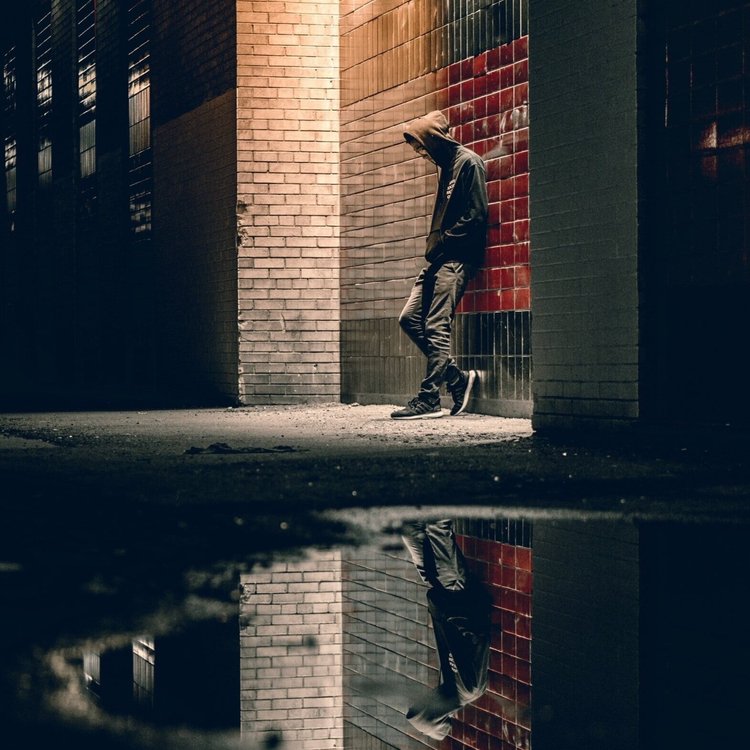
Homelessness in California
83.5 percent of people experiencing homelessness in California are unsheltered and/or chronically homeless, which is the highest rate of any U.S. state. In 2020, local governments in California started to intensify anti-homelessness campaigns with limited success as local citizens reported extensive sprawls of people in parks and public areas, creating unsanitary conditions with negative effects on small businesses. Sources: HUD 2020 Annual Homeless Assessment Report & California Law Review
California Point-in-Time Count 2018-2020

2018: 129,972, 40,429, 89,543 | 2019: 151,278, 42,846, 108,432 | 2020: 161,548, 47,888, 113,660
Homelessness in California grew 24 percent between 2018 and 2020. In fact, the Golden State’s homeless population made up 50 percent of America’s unsheltered population in 2020. Nearly three-quarters of the more than 161,000 people experiencing homelessness in the state on a single night in January were living unsheltered, oftentimes on the streets in encampments that seemed to pop up in cities from north to south.
California’s severe affordable housing crisis puts Californians at risk of housing instability and homelessness. The state saw a 6.8 percent increase in its homeless population from 2019 to 2020. California now has an estimated 161,548 people experiencing homelessness, more than any other state in the nation.
Source: The U.S. Department of Housing and Urban Development, HUD 2020 Annual Homeless Assessment Report
1/3 of the people experiencing homelessness in the U.S. are in California
Even before the coronavirus reached the U.S., California was already in the midst of a public health crisis. Of the roughly 161,000 homeless in the Golden State in 2020, 70.4 percent were living unsheltered, oftentimes in unsanitary conditions.
Even worse, 78 percent of the 12,172 homeless unaccompanied youth in California were unsheltered in 2020. California also has the highest proportion of homeless veterans without shelter in the U.S. at 70.1 percent.
Source: Bay Area Council’s Bay Area Homeless 2021 Report, HUD 2020 Annual Homeless Assessment Report, and HUD 2020 PIT Estimates
Unsheltered Individuals in California and the U.S. in 2020

California: 52% | All Other States: 48%
Homelessness in the San Francisco Bay Area
Homelessness in the San Francisco Bay Area has reached crisis proportions. In fact, the Bay Area accounted for more than 25 percent of the increase in homelessness throughout the U.S. between 2017 and 2020.
On one night in January 2020, San Francisco had more than 8,100 people who were experiencing homelessness with 65 percent living unsheltered. Even more striking: 80 percent of unaccompanied youth are unsheltered. Sources: The U.S. Department of Housing and Urban Development 2020 Report, The U.S. Department of Housing and Urban Development 2020 PIT Estimates
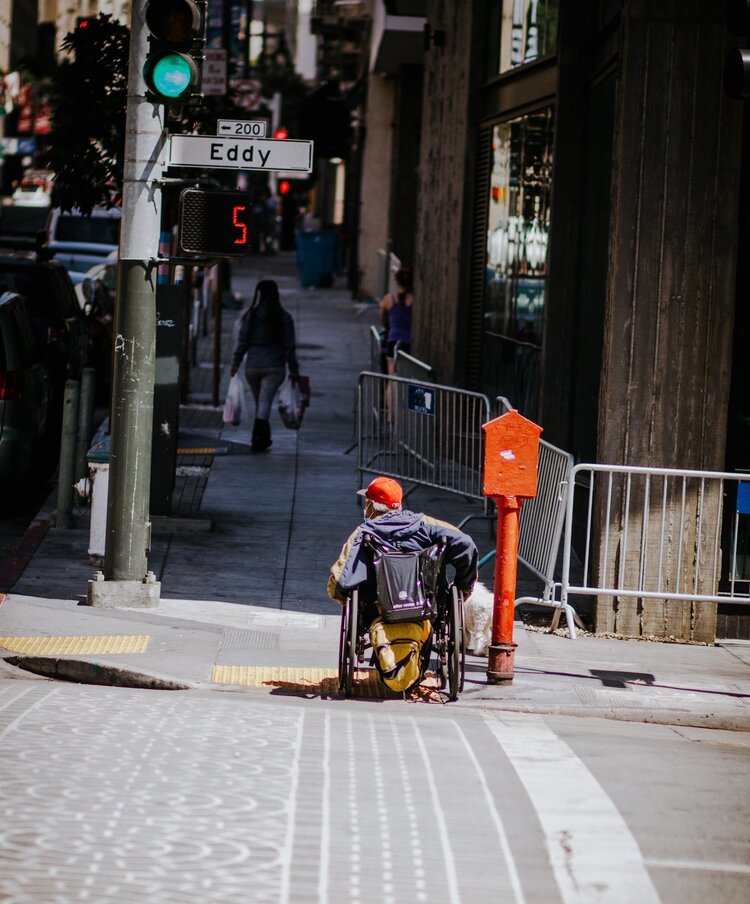
SAN FRANCISCO BAY AREA
Two-thirds of the Bay Area’s homeless residents are living on the street, in their cars, or in encampments, while the remainder live with daily uncertainty over whether their bed at night will be a relative’s couch or a temporary shelter cot. Tent encampments are a visible feature of the region’s streetscape, and the crisis is placing an undue burden on auxiliary support systems, such as healthcare, criminal justice, and behavioral health.
According to the 2020 HUD Housing Inventory Count and Unsheltered Need for San Francisco, the city has 3,530 total year-round emergency, safe haven, and transitional housing beds. Compared with the unsheltered PIT count of 5,180 individuals in San Francisco in 2020, the city falls short by at least 1,650 beds every night. Unsheltered homelessness in San Francisco is visibly on the rise as 2020 numbers reflect. And, we already know that 2021 will be much worse because of the pandemic and the impact it has had on the most vulnerable.
Source: HUD 2020 CA Continuum of Care Housing Inventory Count Report
San Francisco Point-in-Time Count 2018-2020

2018: 6,857, 2,504, 4,353 | 2019: 8,035, 2,855, 5,180 | 2020: 8,124, 2,944, 5,180
The 2019 City and County of San Francisco point-in-time count was followed up with a survey that was administered to 1,054 unsheltered and sheltered homeless individuals in order to profile their experience and characteristics.
In 2019, 64 percent of the total homeless population were unsheltered. 27 percent of San Francisco’s homeless population identified as LGBTQ+. Of the homeless veterans, 81 percent were unsheltered. Of the homeless unaccompanied youth, 82 percent were unsheltered.
Source: San Francisco Homeless Count and Survey 2019 Executive Summary.
Ways to Join Us
Donate
Every dollar leads to positive impact.
Be an Ambassador
Use your connections for a cause.
Join the Alliance
We’re looking for companies that care.
